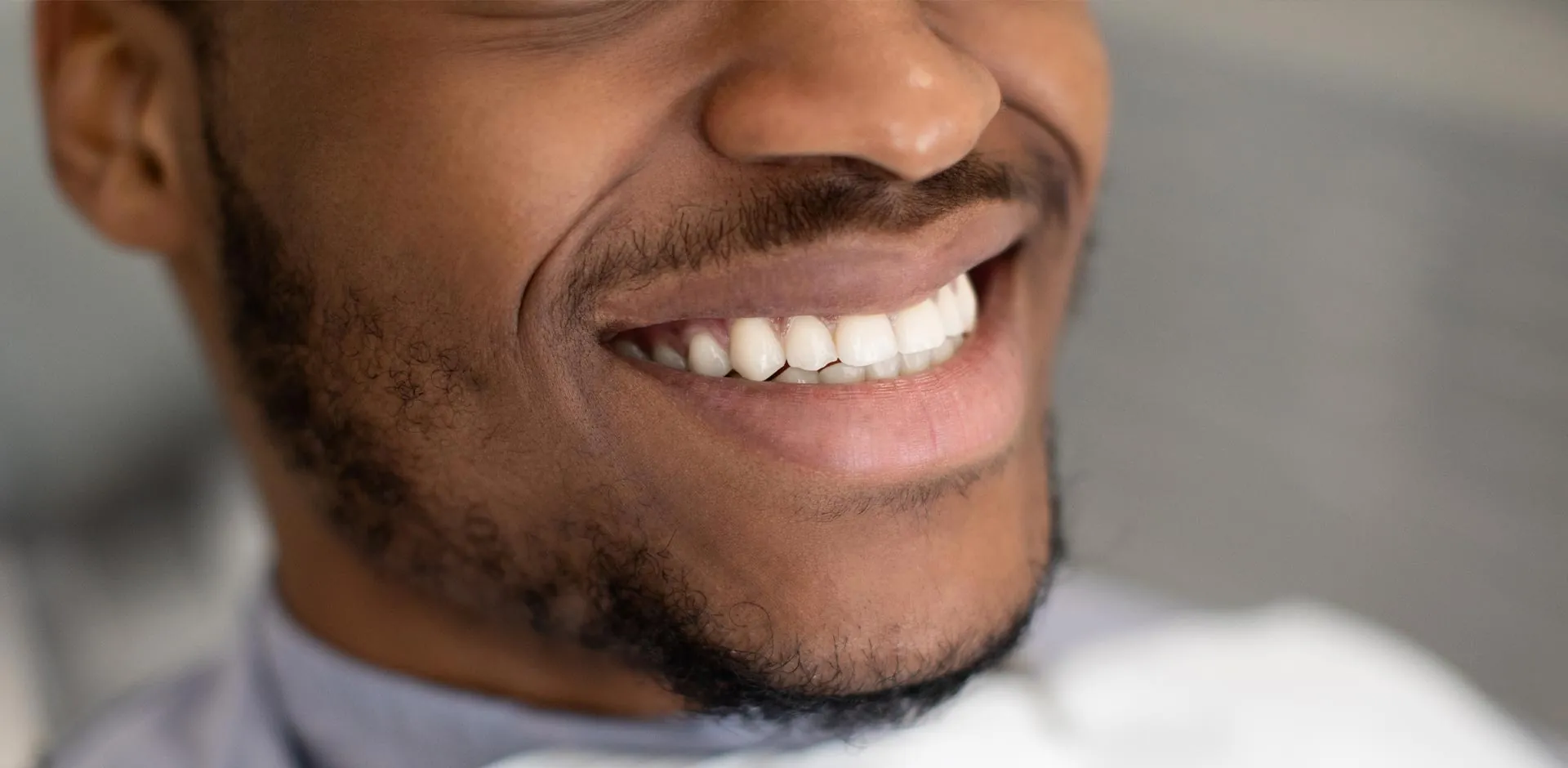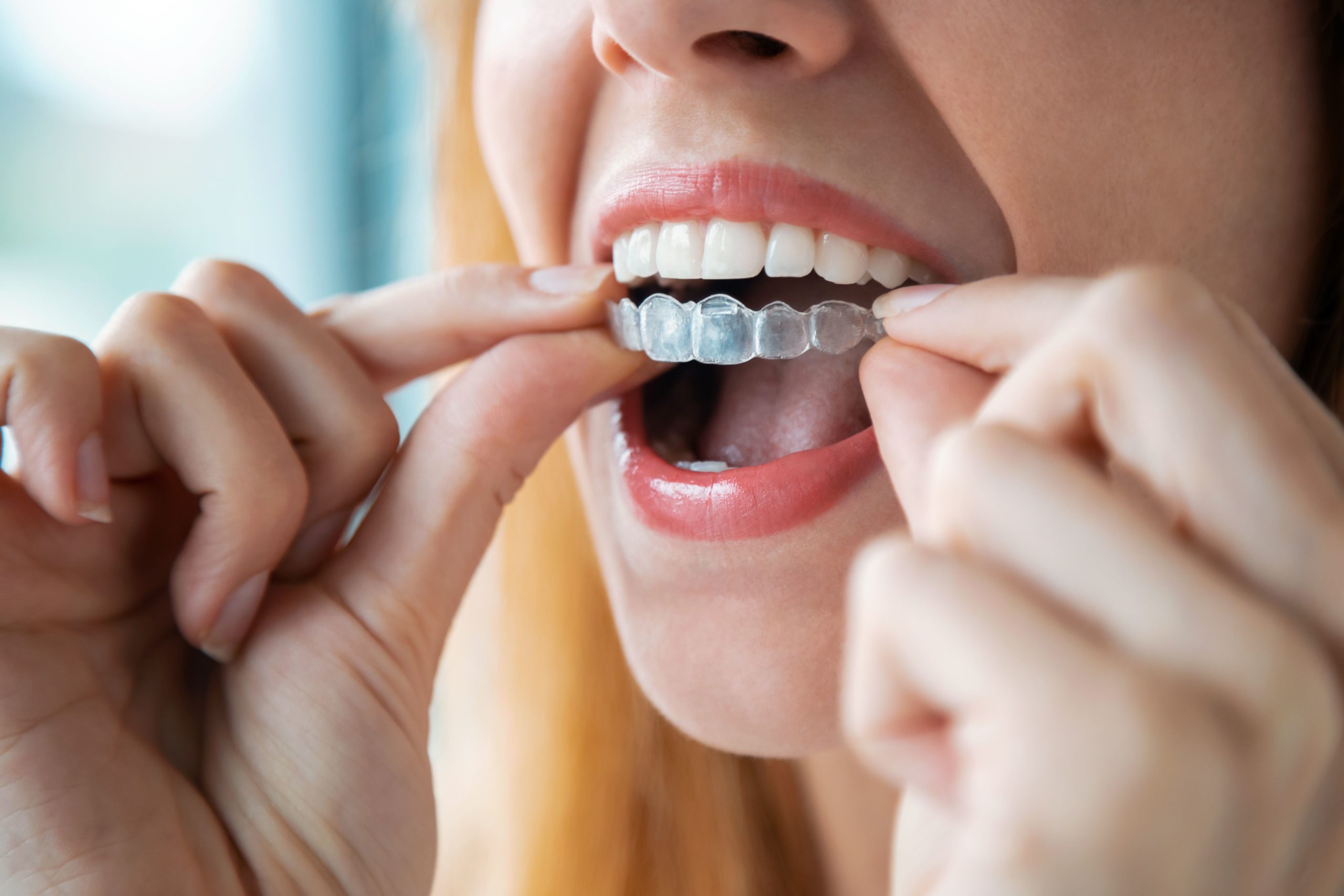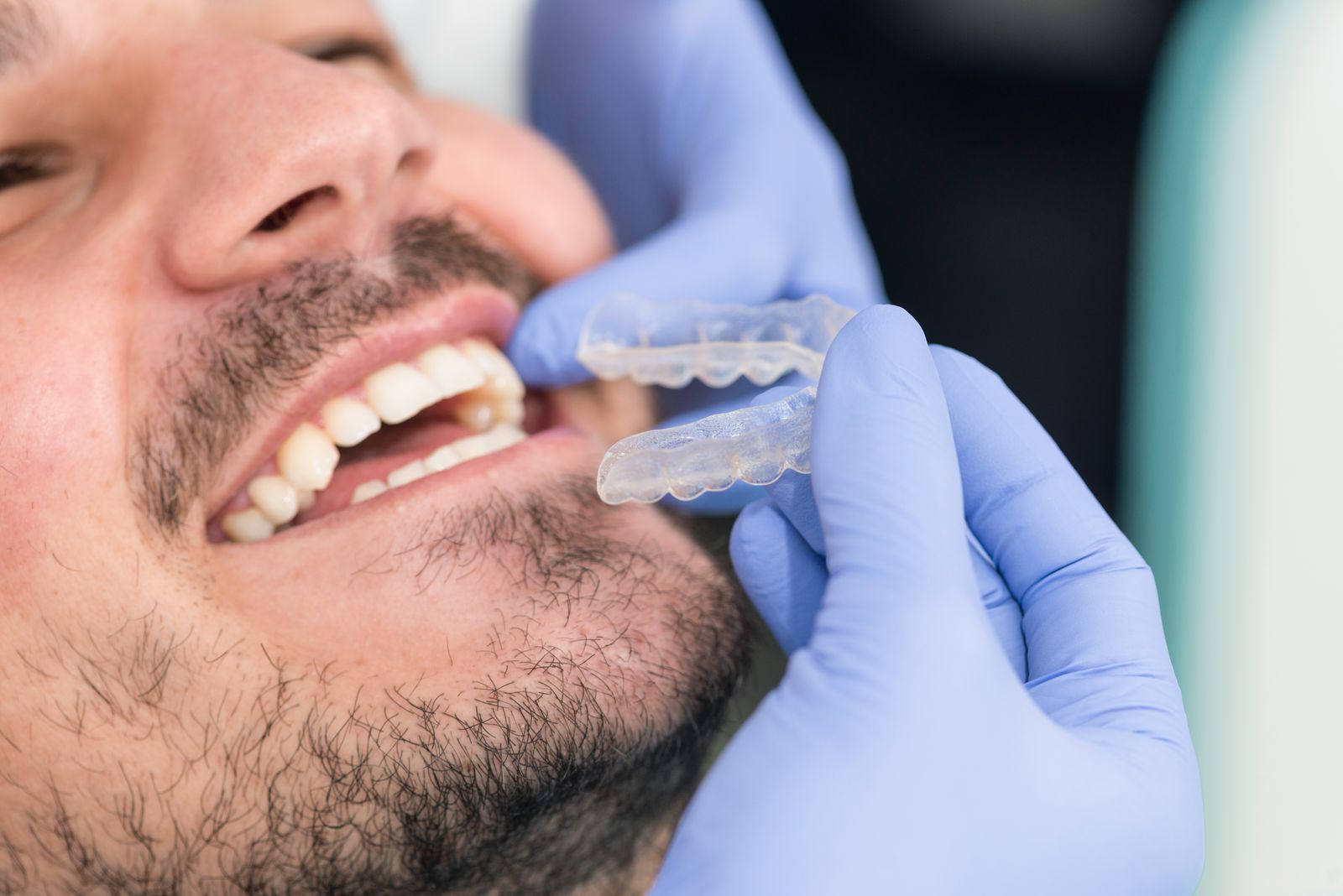Traditional braces have been the best method for straightening teeth for a long time. However, metal wires and scratchy brackets make the procedure unappealing for many patients. Using modern technology and revolutionary designs in plastics, Invisalign offers an alternative that will have both young and adult patients grinning from ear to ear! Here are 10 things we at Allred Dental think you should know about Invisalign before making a choice about your treatment.
For kids and adults alike, the decision to straighten misaligned teeth is a life-changing one. At Allred Dental, we want the best for our patients, and that means making sure they fully understand their options. If you’re undecided about Invisalign and are located in the San Marcos, Oceanside and Encinitas, areas, please call us. Our staff is waiting to schedule a consultation with you today!
1) Time-Intensive...
Many people look to Invisalign because of their revolutionary clear plastic trays. The process works by fitting aligners onto your teeth, letting them gently push and pull your dentition into new positions. While fixed braces are cemented directly onto enamel, Invisalign trays are meant to be removed throughout the day. Unlike metal brackets, aligners aren’t meant to handle the stress of eating.
However, this doesn't mean that patients can remove their Invisalign trays whenever they wish. In fact, dentists recommend that aligners remain inserted for 20 to 22 hours each day! Even though they act like removable braces, they still need to apply that pressure constantly for the treatment to work.
2) ...And Time-Saving
Wearing trays all day except when eating or brushing lets Invisalign do its job quickly and efficiently. On average, most adult patients only need to use their aligners for about a year. More severe cases may require additional weeks or months, but when compared to the average two-year treatment plan offered by metal braces, it can be quite a relief!
Traditional braces still have their place, though. Severe cases of misalignment may require the accuracy and complex movements that plastic alignment trays just can’t provide. Absent-minded patients might want to look at metal braces as well, since forgetting to use the trays increases treatment time. Many parents shy away from Invisalign for their younger children for exactly that reason!
3) Hygiene Habits
While clients are able to remove trays to brush and floss, it’s more important than ever they keep their oral hygiene game strong. Aligners are removed to eat and drink anything other than water. This keeps the plastic safe from biting pressure and ensures that fluids like coffee and juice that can stain teeth stay out of the trays.
Patients that don’t brush and floss well risk trapping sugars and food particles between their teeth and the alignment tray. Poor dental hygiene can lead to staining and even cavities. It may also influence how the aligners sit against dentition, making them much less effective. Patients who choose Invisalign need to make sure they are brushing and flossing well after eating to avoid these plaque-inducing pitfalls.
4) Keeping Crystal Clarity
Just like your teeth, leaving gunky buildup in aligners can rot and stain dentition. Even worse, aligners can become yellow and cloudy, defeating the purpose of your invisible braces altogether! At least once a day, patients should:
- Rinse aligners in water to remove larger debris.
- Lightly scrub trays with water and a gentle, clear soap using a soft-bristled brush.
- Rinse thoroughly to remove soap and other particles.
- Store in a protective case when not in use.
Remember to use a different brush for your trays than your regular toothbrush. Standard toothpastes can scratch the surface of aligners, making them appear foggy and allowing them to harbor harmful bacteria. Some patients bring an oral hygiene kit with them, usually including a set of brushes, toothpaste and cleaning solution so they don’t need to worry about oral hygiene when they’re out on the town.
5) Different Discomfort
Having teeth moved around in your jaw is going to cause your mouth to ache, there’s no way around that. However, the level of discomfort patients feel using Invisalign is not the same as with traditional braces. While both methods accomplish a similar task, they go about it in different ways.
Invisalign trays primarily work on the biting surface of teeth, and the shifting tends to be much less drastic than the tightening associated with metal braces. In addition, patients are given multiple trays during one office visit, allowing them to move dentition around in a much more gradual process. This means less pressure on your teeth, leaving you feeling some tightness but not to the extreme of traditional braces.
6) Fewer Office Visits
While it may make your orthodontist lonely, patients who use Invisalign see their doctors much less frequently than those using fixed braces. In order to maintain constant shifting pressure, wires in fixed braces need to be adjusted on a regular basis. This isn’t something a patient can do at home. It is also important to check on how the treatment is progressing, requiring more time in the chair as the doctor performs an inspection.
Patients are sent home with multiple Invisalign trays for the same reason. Each set of aligners shifts teeth a little more. This not only reduces the pain but ensures that dentition goes exactly where it's supposed to. Unlike traditional braces, patients take an active role in the straightening process. While your orthodontist still needs to oversee the process, you’ll need to make the trip to their office much less frequently!
7) Backups at the Ready
A big advantage to traditional braces is that they can’t be taken out. While it seems like being able to remove Invisalign trays gives them an edge, it can be a big drawback as well. Taking out aligners to eat means they aren’t secured in your mouth. Many people simply leave them on cafeteria trays or bundle them in napkins so as not to offend their lunchmates.
All too often, these trays end up in the trash or damaged beyond repair. This doesn’t mean you’ll need to schedule a trip to the orthodontist, though. Instead, you can use the previous trays to keep your teeth in place until a new set arrives. Depending on where you are in your treatment plan, you may even be able to move on to the next set! Even so, patients should take care to ensure their Invisalign trays are stored safely during mealtime to prevent such accidents from occurring.
8) Comfort is Key
Both fixed braces and Invisalign may cause your mouth to ache as your teeth move, but that discomfort doesn’t address the material used to straighten teeth. Metal brackets and wires may cause oral irritation during treatment. At times, braces can scratch the inside of your mouth and wires may poke at the back of your jaw. If a breakage occurs, you may even need to wait until the next day before your orthodontist can set things right.
Because Invisalign trays are constructed from medical-grade plastic (specifically multilayer thermoplastic polyurethane/copolyester), they are non-reactive and have softer edges. While you’ll still notice that something is moving your teeth around, your cheeks and jaw will take much less of a beating from the treatment! Some patients also note that their teeth feel smaller while the trays are out, which may take some getting used to.
9) Time to Adjust
It’s not just your teeth that are going to feel different. Wearing trays most of the day is going to require a bit of an adjustment period. Some people say that they suffer from dry mouth, while others report more saliva than usual. Others say that lisping is a big issue, too.
While it’s true that many patients acquire a lisp during the initial stages of the treatment, it usually goes away rather quickly. Alignment trays change the shape of your mouth and restrict your tongue's movement. Until patients become accustomed to a new oral structure, they may notice a slurring of their -s and -z sounds. These side effects usually lessen after around a month, but if they don’t it might be a sign of poorly sized trays.
10) Never Too Old
Many people feel they’ve missed their window to have the smile they’ve always dreamed of. Others may think traditional braces will have a negative effect on their careers and social life. Thanks to Invisalign, drastic dental adjustments are now a practical option for patients of all ages and walks of life.
Because trays are clear and removable, many adults find them to be a perfect fit for their daily routine. With proper care, trays remain clear throughout the treatment and side effects like lisping tend to disappear after a few weeks. As a result, only the people you want to know will realize you’re undergoing a treatment that will change your life!
Get Things Straight with Allred Dental
Patients in the San Marcos, Oceanside, and Encinitas areas deciding to correct crooked teeth may feel they have a difficult choice to make. If you have more questions about Invisalign, contact us for a consultation. Our staff is ready to help you find the best solutions for your dental problems and make you proud to show off your smile!



